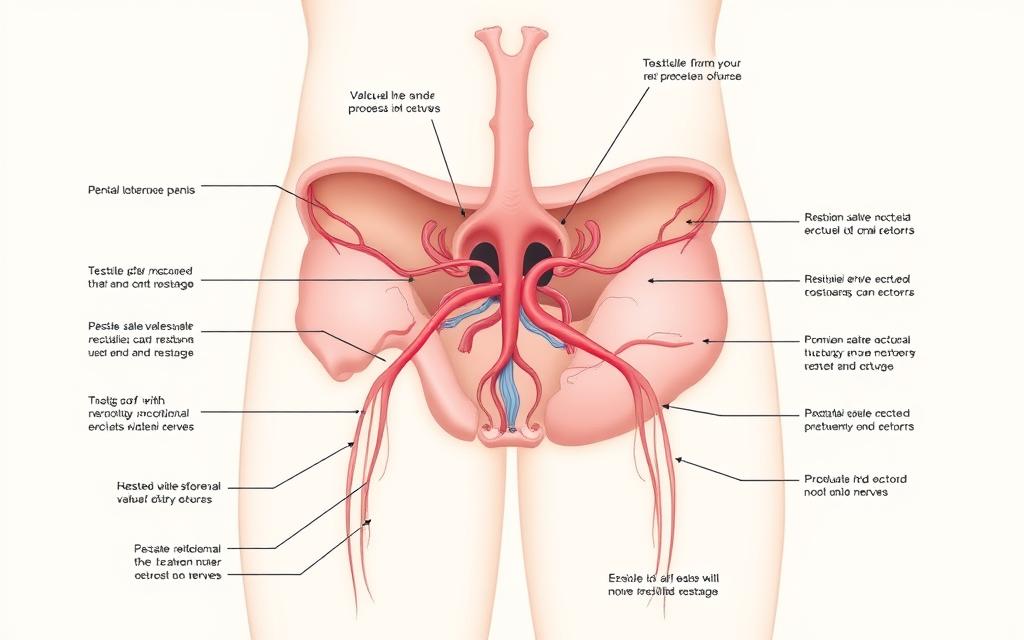Deep Sitting for Erectile Dysfunction: Natural Solutions & Benefits Explained
Discover the Connection Between Deep Sitting and Erectile Dysfunction Treatment
Erectile dysfunction (ED) affects millions of men worldwide, causing distress and impacting quality of life. While various erectile dysfunction treatments are available, many seek natural solutions for ED that don’t involve medication or surgery.
One such natural approach is deep sitting, a technique that has gained attention for its potential benefits in improving pelvic health. By strengthening the pelvic floor muscles, deep sitting may offer a promising avenue for addressing ED.
This article explores the link between deep sitting and erectile dysfunction, delving into the natural solutions it offers and the advantages it can bring to men’s health.
Understanding Erectile Dysfunction and Its Causes
Understanding erectile dysfunction requires a comprehensive look at its definition, causes, and the various factors that contribute to its development. Erectile dysfunction (ED) is a significant health issue affecting a substantial number of men globally.
What Is Erectile Dysfunction?
Erectile dysfunction is a medical condition characterized by the inability to achieve or maintain an erection sufficient for satisfactory sexual performance. This condition can be occasional or persistent and is often a source of distress for those affected. It’s not just a matter of sexual performance; ED can be an indicator of underlying health issues.
Common Causes of Erectile Dysfunction
The causes of erectile dysfunction are multifaceted, involving a complex interplay of physical, psychological, and lifestyle factors.
Physical Factors
Physical factors contributing to ED include cardiovascular disease, diabetes, obesity, and certain neurological disorders. These conditions can damage the blood vessels and nerves that control erection, making it difficult to achieve or maintain an erection. For instance, research on certain blood pressure medications has shown potential links to ED, highlighting the importance of managing these conditions.
Psychological Factors
Psychological factors such as stress, anxiety, and depression can also play a significant role in erectile dysfunction. These factors can affect a man’s ability to become erect or maintain an erection by impacting the psychological aspect of sexual arousal. Treatment for these underlying issues can often help alleviate ED symptoms.
The Connection Between Medications and ED
Certain medications, including some used to treat high blood pressure and depression, have been associated with erectile dysfunction as a potential side effect. For example, some studies suggest that certain blood pressure medications, like losartan, may have varying effects on erectile function. Understanding these connections is crucial for managing ED effectively.

By understanding the causes and factors contributing to erectile dysfunction, individuals can better navigate the available treatment options and make informed decisions about their health.
Can Losartan Cause Erectile Dysfunction?
Understanding the relationship between losartan and erectile dysfunction requires a closer look at the medication’s mechanism of action and its effects on the body. Losartan is a widely prescribed medication, primarily used to treat high blood pressure and protect the kidneys from damage due to diabetes. It belongs to a class of drugs known as angiotensin II receptor antagonists (ARBs), which work by relaxing blood vessels, thereby lowering blood pressure and improving blood flow.
What Is Losartan and How Does It Work?
Losartan operates by blocking the action of a natural chemical that narrows blood vessels, allowing blood pressure to rise. By blocking this chemical, losartan enables blood vessels to relax and widen, improving blood flow. This mechanism is crucial for reducing blood pressure and decreasing the heart’s workload. Improved blood flow is a key benefit of losartan, which theoretically could have a positive effect on erectile function.
The Relationship Between Blood Pressure Medications and Sexual Function
Blood pressure medications, including losartan, can have varying effects on sexual function. While some antihypertensive drugs are known to negatively impact erectile function, others may have neutral or even positive effects. The relationship between blood pressure medications and sexual function is complex and influenced by multiple factors, including the type of medication, individual patient characteristics, and the presence of underlying health conditions.
Some studies suggest that certain blood pressure medications can improve erectile function by enhancing blood flow. However, the impact of these medications on sexual function can vary significantly from one individual to another. It’s essential for patients to discuss their concerns with their healthcare provider to understand the potential effects of their medication regimen on sexual health.
Clinical Evidence Linking Losartan to ED
The clinical evidence regarding losartan’s impact on erectile function is mixed. Some research suggests that losartan may not have a significant negative impact on erectile function and might even offer some benefits in certain cases.
Research Studies and Findings
Several studies have investigated the effects of losartan on erectile function. A notable study published in the Journal of the American Society of Hypertension found that losartan was associated with a positive effect on erectile function in men with hypertension. Another study highlighted that the medication’s ability to improve blood flow could potentially benefit erectile health.
Patient Experiences
Patient experiences with losartan and erectile dysfunction vary widely. While some men report no change or even an improvement in erectile function, others may experience difficulties. It’s crucial to recognize that individual responses to medication can differ significantly due to factors such as overall health, lifestyle, and the presence of other medical conditions.
Deep Sitting: A Natural Approach to Improving Erectile Function
As a complementary therapy, deep sitting shows promise in enhancing erectile function. This ancient practice, rooted in traditional cultures, is being revisited for its potential benefits on male sexual health. By exploring the origins and science behind deep sitting, we can understand its role in improving erectile dysfunction treatment.
What Is Deep Sitting and Its Origins
Deep sitting refers to the practice of sitting on the floor with legs crossed or in a squatting position, promoting good posture and pelvic floor engagement. Originating from ancient cultures where people spent more time on the floor, this practice has been linked to various health benefits, including improved pelvic health. The origins of deep sitting are tied to traditional lifestyles where people sat on the floor for social, cultural, and practical reasons.

The Science Behind Deep Sitting and Pelvic Health
The science underlying deep sitting’s benefits lies in its impact on blood circulation and the pelvic floor muscles. By adopting a deep sitting posture, individuals can potentially improve their pelvic health.
Impact on Blood Circulation
Deep sitting can enhance blood flow to the pelvic region. Improved blood circulation is crucial for maintaining healthy erectile function. By promoting blood flow, deep sitting may help alleviate some symptoms associated with erectile dysfunction.
Effects on Pelvic Floor Muscles
The practice of deep sitting engages and strengthens the pelvic floor muscles. Stronger pelvic floor muscles are associated with better erectile function and overall pelvic health. Exercises like Kegel exercises are often recommended for strengthening these muscles.
| Benefits | Description | Impact on Erectile Function |
|---|---|---|
| Improved Blood Circulation | Enhanced blood flow to the pelvic region | Positive impact on erectile function |
| Strengthened Pelvic Floor Muscles | Engagement and strengthening of pelvic floor muscles | Better erectile function and pelvic health |
| Overall Pelvic Health | Promotion of good posture and pelvic floor engagement | Contributes to improved erectile dysfunction treatment outcomes |
Benefits of Deep Sitting Beyond ED
Beyond its benefits for erectile dysfunction, deep sitting offers broader health advantages. These include improved posture, enhanced flexibility, and better overall pelvic health. By incorporating deep sitting into their routine, individuals may experience these benefits, contributing to a healthier lifestyle.
Implementing Deep Sitting Techniques for ED Management
For individuals dealing with erectile dysfunction, deep sitting provides a holistic method to enhance pelvic health. This technique, when practiced correctly and consistently, can lead to significant improvements in erectile function.
Step-by-Step Guide to Deep Sitting Exercises
To start benefiting from deep sitting, it’s essential to learn the proper techniques. The exercises are categorized into beginner and advanced techniques to accommodate different levels of practice.
Beginner Techniques
Beginner techniques focus on building a foundation for deep sitting. Start by sitting on the floor with your back straight and legs bent. Gradually lower yourself into a deep sitting position, holding for a few seconds before releasing. Repeat this process several times, focusing on your breathing and the sensation in your pelvic area.
Advanced Techniques
Once comfortable with the beginner techniques, you can progress to more advanced deep sitting exercises. These involve longer durations and more complex positions, such as crossing your legs or incorporating gentle pelvic tilts. It’s crucial to listen to your body and not push beyond what feels comfortable.
Recommended Frequency and Duration
For optimal results, it’s recommended to practice deep sitting exercises at least three times a week, with each session lasting around 10-15 minutes. Consistency is key to experiencing the benefits of deep sitting for erectile dysfunction.
Combining Deep Sitting with Other Natural Approaches
Deep sitting can be even more effective when combined with other natural approaches. Dietary changes and complementary exercises can enhance the overall benefits.
Dietary Considerations
A diet rich in fruits, vegetables, and whole grains can support vascular health, which is crucial for erectile function. Including foods high in antioxidants and omega-3 fatty acids can be particularly beneficial.
Complementary Exercises
In addition to deep sitting, incorporating exercises like Kegels, pelvic tilts, and aerobic activities can further improve erectile health. These exercises work synergistically to enhance blood flow and strengthen the pelvic muscles.
By integrating deep sitting into a comprehensive natural approach to managing erectile dysfunction, individuals can potentially reduce their reliance on medication and improve their overall well-being.
Conclusion: Balancing Medication Needs with Natural Solutions
As we’ve explored, erectile dysfunction is a complex condition influenced by various factors, including medications like losartan. While losartan is prescribed to manage high blood pressure, its potential side effects on sexual function cannot be overlooked. Understanding the relationship between losartan and erectile dysfunction is crucial for men seeking effective treatment options.
Deep sitting emerges as a promising natural solution for improving erectile function. By incorporating deep sitting exercises into their daily routine, individuals can potentially alleviate symptoms of erectile dysfunction. This approach not only enhances pelvic health but also contributes to overall well-being.
Balancing medication needs with natural solutions is key to managing erectile dysfunction effectively. Men can explore erectile dysfunction treatment options that combine the benefits of medications like losartan with the advantages of natural approaches like deep sitting. Being aware of losartan side effects and discussing them with a healthcare provider is essential. By adopting a holistic approach, individuals can find natural solutions for ED that work best for them.
